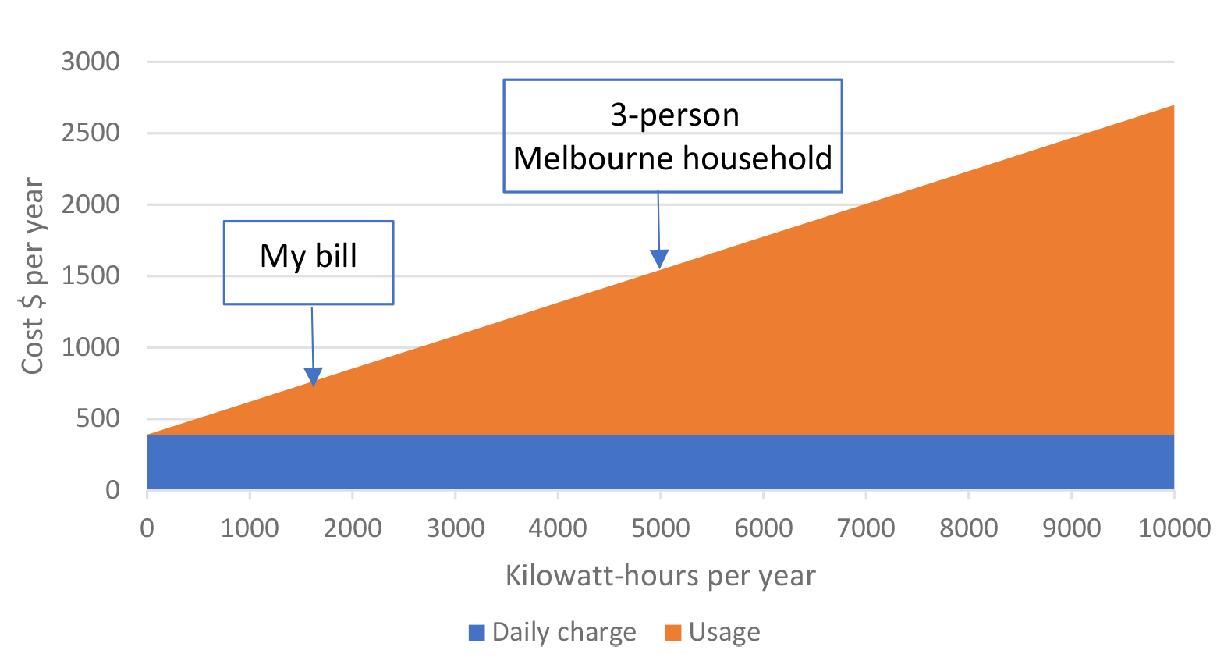The summer that was…
Alan Pears brings us the latest news and analysis from a frenzied period of activity for the energy sector.
So much for a summer break! Our new Australian government released a barrage of consultations that drove frenzied activity to meet early February deadlines. Advocates for energy efficiency, energy productivity and demand management have had their hopes raised by the government’s interest in finally addressing Australia’s “forgotten fuel”. I hope we won’t be disappointed.
Small portable electricity generators—inefficient, polluting and noisy
Fires and floods around Australia have raised interest in small generators to provide basic energy services when grids fail. Many campers use them. They are widely used in developing countries by businesses and fragile household grids where lengthy blackouts occur. As more Australians shift off-grid, they will become even more common here.
But there are some big issues. After the fires in Mallacoota, fuel had to be helicoptered in, and the helicopters would not carry petrol for safety reasons. Small generators use a lot of fuel.
I was puzzled when told that some bushfire-affected households were consuming up to 20 litres of fuel per day just running basic services like fridges, lights and mobile phones. To put this in context, a 25 per cent efficient generator using 20 litres per day would produce around 50 kilowatt-hours of electricity. These households would have been using more like 5 kWh per day, at under 3 per cent efficiency!
This situation has global implications. Large numbers of small generators are being used throughout the developing world, seemingly at appallingly low efficiencies and extremely high fuel costs while creating air pollution, noise and safety risks. When fuel is transported long distances in small quantities, these impacts are amplified, as is the risk of spills and fires.
Yet I could not find much discussion of this issue in international literature. We really need to sort out this issue.
After internet-searching the efficiencies of small generators over their operating range, I found data is scarce. At full load, small generators are typically 15 to 20 per cent efficient. At 25 per cent load, they are more like 5 to 10 per cent efficient. Efficiency would undoubtedly fall even lower at lower loads. This seems to explain the real-world experience I had been told about.
This means that people in crisis and in developing countries are paying extremely high prices for small amounts of electricity while polluting our environment. At 5 per cent efficiency, each kilowatt-hour requires two litres of petrol—that’s $3 or more per kilowatt-hour, over ten times what most Australians pay. The logistics and costs of keeping them functioning in remote areas or after crises are much trickier than they should be: they should need much less fuel.
I suspect that small generators should incorporate or be connected to a battery, so the generator runs at optimum efficiency to charge the battery, which then efficiently provides the energy people need. Generator manufacturers could then optimise overall real-world efficiency.
The safeguard mechanism
The government’s proposed safeguard mechanism has provoked much debate, but it seems to be a goer. A few interesting issues emerge if you step back.
First, the scheme only applies to scope 1 emissions—on-site emissions mainly from burning fossil fuels. It does not cover emissions from electricity supply. Most mines use a lot of diesel fuel to move ore and overburden. They often have diesel-fuelled electricity generation. Energy-intensive industries such as alumina production use a lot of gas or coal.
So, maybe the scheme will drive a faster shift to efficient electric technologies such as electric trucks (or more efficient electric conveyors), renewable/battery electricity generation, and, for the alumina industry, Mechanical Vapour Recompression (a kind of heat pump technology suited to their core process).
If so, some businesses covered by the scheme may easily meet and beat their required safeguard emission reduction targets while cutting emissions from electricity. This would allow them to make lots of money selling offsets to businesses covered by the scheme that are struggling to cut their emissions.
On the positive side, this may accelerate efficient renewable electrification. On the other hand, if lots of cheap offsets are available, it may allow some big industries to meet their obligations at low cost without much change.
And it could allow new gas and coal projects, that lead to high emissions in other countries when they burn our exported fossil fuels, to go ahead—even though those emissions contribute to increased global emissions. This is because Australia’s international climate commitments only consider emissions occurring within Australia: emissions from burning the fuels are the problem of the countries that buy them.
The world is a complicated place.
Energy pricing games
Since the recent energy market chaos, my fixed daily electricity charge has increased by over 30 per cent to $1.07 per day but my unit charge only increased by 1.4 per cent to 23.1 cents per kilowatt-hour. The daily charge is now just over half of my average bill. A higher fixed charge impacts small consumers much more than larger consumers, as shown in Figure 1.

I don’t know if other retailers have adopted a similar approach, but, if they have, it is a socially regressive approach that undermines price signals for consumers to become more energy efficient and cut emissions. There is a long history to this: when Victoria’s electricity system was prepared for privatisation in the early 1990s, the Kennett government arbitrarily doubled the daily supply charge, which framed a high charge as ‘normal’.
The recent tariff change was mainly driven by an increase in wholesale electricity price, not fixed network and other costs, so why has the fixed charge increased so much? Is it because of retailer concern about the cost impact on high consumers? Or a way of minimising the incentive to save electricity and shifting cost risk onto consumers instead of the retailer? Or something else?
This situation raises some important issues for future energy pricing. If energy retailers and network operators increase daily fixed charges, this will penalise small consumers and consumers in embedded electricity and heat networks, reduce the incentive to cut emissions, and force them to make big decisions about staying or leaving grids. In principle, it should make sense for consumers with PV and energy storage to remain connected to the grid, while many gas consumers may wish to remain connected to gas grids as they progressively shift off gas, and require much less gas when they only need it for hot water or cooking.
State governments, who regulate network operators and retailers, will have to step up. They will have to decide whether they support small consumers and transitioning consumers or incumbent network operators and energy retailers.
Chris Bowen quoted in The Age
Minister for Climate and Energy Chris Bowen said at the recent COP27 climate talks in Egypt the difference between 1.5 and 1.7 degrees of warming for the planet was “enormous” and implored other nations to up their efforts to cut emissions.
“If we’re not trying to keep to 1.5°C, then what are we here for?” Bowen asked. If Australia could cut its emissions more “we will”, Bowen said, but he cautioned 2030 was only 85 months away and the current target “requires big changes”.
Err, so why are we still developing new fossil fuel resources?
The challenge of change
As we face a period of disruptive change in many areas, particularly energy and water, it is useful to remember some business fundamentals. Incumbent industries have very large financial flows and their primary focus is on shareholder perceptions, which drive share prices. Even delaying an adverse change by a week is worth millions of dollars to them.
So, they can justify spending enormous amounts of money to delay or (preferably) block change, at least until they can create a business model that will work in the new context. I learnt this in the 1980s when I worked on implementing appliance energy labelling and Australia’s first building energy regulations. I have seen it play out many times since then.
In contrast, disruptive innovators have limited resources and many potential supporters and beneficiaries see their proposals as risky.
Machiavelli summed this up nicely: “It should be borne in mind that there is nothing more difficult to manage, or more doubtful of success, or more dangerous to handle than to take the lead in introducing a new order of things. For the innovator has enemies in all those who are doing well under the old order, and he has only lukewarm defenders in all those who would do well under the new order. This lukewarmness arises partly from the incredulity of men who do not truly believe in new things until they have had a solid experience of them. Thus it happens that whenever his enemies have the opportunity to attack the innovator, they do so with the zeal of partisans, and the others only defend him tepidly, so that he, together with them, is put in danger.”
A key role of governments is to resist this distortion. Let’s hope our governments can do more of this.
Further reading
 Pears Report
Pears Report
Energy costs, climate impacts and quality of life
Alan Pears brings us the latest news and analysis from the energy sector.
Read more Pears Report
Pears Report
Fossil fuels, efficiency and TVs
Alan Pears brings us the latest news and analysis from the energy sector.
Read more Climate change
Climate change
What we can learn from Spain’s response to heatwaves
As Australia heads into a summer set to be marked by climate change and El Niño, resilience to extreme heat is front of mind. Renew’s Policy and Advocacy Manager Rob McLeod reports on Spanish responses to heatwaves and the lessons for Australia.
Read more
